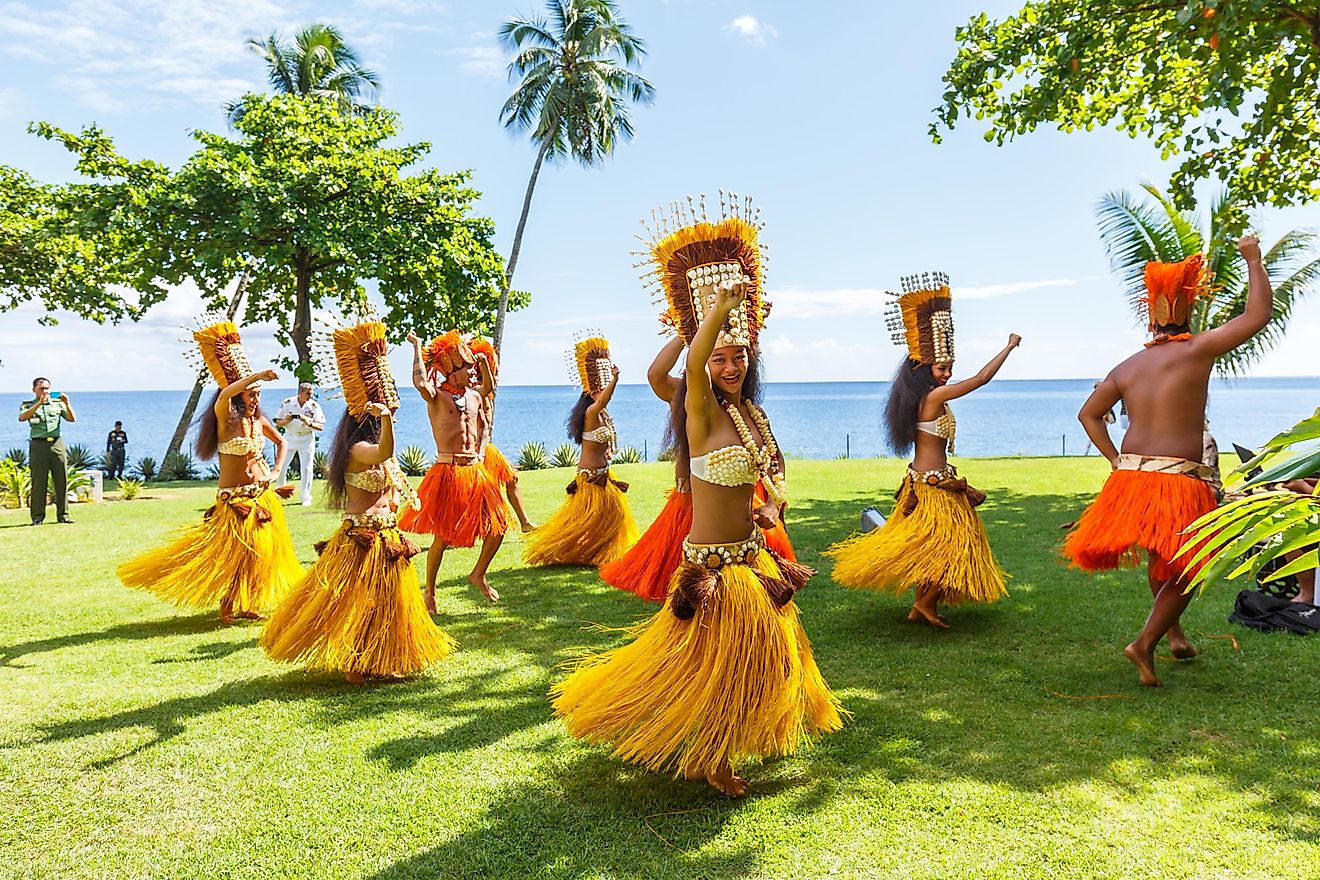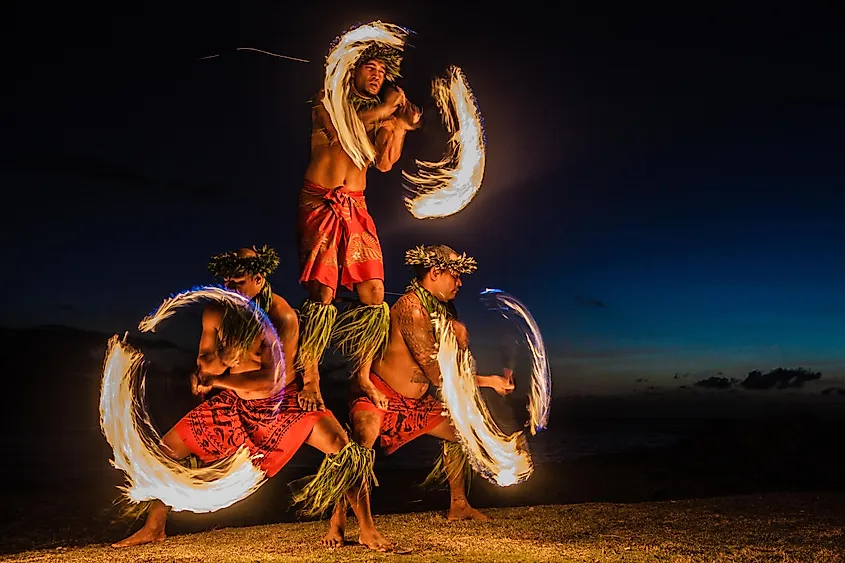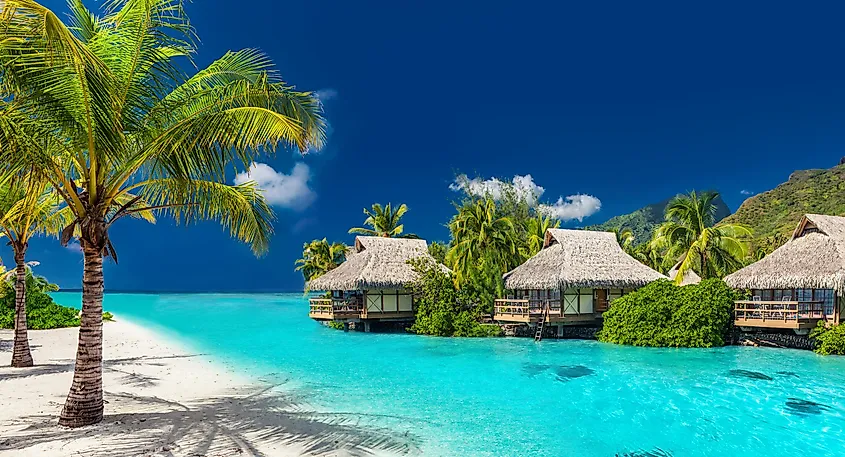What Cultures Are Of Polynesian Origin?

- Polynesia is the origin for many cultures including that of Hawaii, Tonga, and Tahiti, among others.
- The first Polynesians are thought to have migrated to the South Pacific from East Asian locations such as mainland China, Taiwan, and the Philippines.
- The popular TV show "Survivor" has been filmed in Polynesia in Fiji, the Cook Islands, and Samoa.
Polynesia is a place that may bring to mind visions of crystal blue waters, never-ending sunshine and island retreats that form their own slice of paradise. If you think it all sounds like a very nice place to live, you are in good company. Researchers believe that about 3000 years ago, humans set off from East Asia in search of a new place to live and ended up I:n Polynesia. They sailed all the way down to the Pacific islands: places like Tuvalu, Samoa, Tonga, and more.
These first Polynesians are thought to have migrated from mainland China, and then from what is now Taiwan and the Philippines. They were part of the Indigenous Atayal people in Taiwan and the Kankanaey people in the Philippines. There is some debate about whether or not these first Polynesian peoples mixed with the Melanesian people living in Papua New Guinea at the time—Melanesians also arrived in the South Pacific from Asia centuries before the first Asian migration to Polynesia. What is known is that the two cultures did eventually mix and that this likely happened later on in history.

The first Polynesians formed what is now known as the Lapita culture. These people made unique red pottery, and tools from volcanic glass. The Lapita people were also known for being experts at sea, and successful farmers. They grew yams, taro (a root vegetable), and breadfruit, and raised pigs and chickens for eating. The Lapita and the Melanesians lay the groundwork for many future cultures to populate the world through patterns of exploration. These include the cultures of Aotearoa, Fiji, Hawaii, Rapa Nui, Samoa, Tahiti, and Tonga. Polynesian people also populated the Cook Islands, Niue, Tuvalu, Wallis and Futuna, the Truant Archipelago, Tokelau, and Pitcairn. Here is a brief look at a few Polynesian countries.
Aotearoa
Aotearoa is the Māori name for New Zealand. The words mean “Long White Cloud” or “Land of the Long White Cloud,” and is the only part of Polynesia that experiences four distinct seasons. The Māori people form the largest group of Polynesians, with Auckland being considered the biggest Polynesian city in the world.
The Māori language is similar to Hawaiian, Samoan and other island languages in Polynesia. People in this culture traditionally lived in villages with an open courtyard and a communal meeting house and dining area. Weaving, carving, kapa haka (group performance), and moko (tattoos) were all traditional parts of this culture.
Fiji
Fiji is an independent republic, and most people who live there are Melanesians who have intermarried with Polynesians from Samoa and Tonga over generations, so the two cultures are very mixed in Fiji today. Fiji's culture is alive and well and most inhabitants of the country speak Fijian as well as English. Fijians still live in traditional housing and wear wrap-around clothing. Fijians have many interesting customs, one of which is not wearing hats. The head is sacred in Fijian culture. Visitors to the country may struggle with all the sunshine but will find Fijians appreciative if they follow along and keep their head unadorned.

Hawaii
Hawaiian culture goes back a long time and is full of interesting traditions. Hawaiians did not own land privately, but inhabited stretches of land known as Ahupua’a together. One Ahupua’a extended from the mountain to about 1.5 miles into the sea. Hawaiians were the only pacific peoples to farm fish and had a fish pond or Loko i’a on their land. This allowed them to raise far more fish than they could gather from the nearby ocean.
Hawaiian buildings did not have rooms with separate purposes, but rather each building had one purpose. One would be for eating, another sleeping, and another for housing the sick, for example. Playing was done outside, and women and men ate separately, the boys eating with their mothers until the age of around 7 or 8. Food was cooked in an underground oven and served as one large meal, midday. These are just some of the distinct Hawaiian traditions.
Tahiti
Tahiti is now home to people that are of mixed Polynesian and French descent. French is the official language of Tahiti, but people there also speak Tahitian and often English, or another island language. Weaving, woodcarving, storytelling, and tattooing are all a vibrant part of traditional Tahitian culture, which is strongly tied to nature. Tahitian people, like many Polynesians, are very religious and traditionally, each community had a small stone temple for meeting and worship. Instruments made of bamboo and wood were played to accompany dance performances. Society was divided into classes with chiefs, priests, and landowners at the top, and commoners, laborers and servants below.
Each Polynesian culture is related but has its own distinct practices and traditions. By peering deeper into the history of Polynesia, you can discover a fascinating world that thrived for thousands of years and holds many lessons that can be applied to modern living.
What Cultures Are Of Polynesian Origin?
| Polynesian Territory | Status |
|---|---|
| American Samoa | Unincorporated and unorganized territory of the United States; self-governing under supervision of the Office of Insular Affairs |
| Cook Islands | Self-governing state in free association with New Zealand |
| Easter Island | Province and special territory of Chile |
| French Polynesia | Overseas country of the French Republic |
| Hawaii | U.S. state |
| New Zealand | Independent nation |
| Niue | Self-governing state in free association with New Zealand |
| Norfolk Island | Australian External Territory |
| Pitcairn Islands | British Overseas Territory |
| Samoa | Independent nation |
| Tokelau | Overseas dependency of New Zealand |
| Tonga | Independent nation |
| Tuvalu | Independent nation |
| Wallis and Futuna | Collectivity of the French Republic |
| Rotuma | Fijian dependency |











